Abstract
The mechanical properties of the resting, whole semitendinosus muscle of the frog have been characterized as functions of both muscle length and temperature. Measurements were made of pseudorandom white noise (PRWN) displacements (less than 10 A/half-sarcomere) applied to the muscle and the force responses to these movements. Signal correlation techniques were then used to obtain the dynamic modulus function for the muscle in the frequency range 2.44-320 Hz. This function was represented by a series combination of a Voigt element and a time delay element for tension propagation along the muscle. A dynamic elastic modulus (E), coefficient of damping (B), and tension transmission velocity (V) were measured for resting muscle on the basis of this model. For each of these parameters, a marked variation with sarcomere length (s) was found. The mean values for E and B at LO (s=2.25 mum) were 1.84+/-0.24 X 10(5) N/m2 and 2.33+/-0.25 X 10(2) Ns/m2, respectively. Further, B demonstrated a negative temperature dependence, Q10=0.78 (P less than 0.05), in the range s=2.6-3.0 mum, while E was not significantly temperature dependent. The length-dependent variations of E and B are interpreted as deriving from both passive muscle elements and attached crossbridges. Velocity was calculated at a single displacing frequency for every experiment; the mean value at LO and all temperatures was v=11.7+/-0.6 m/s. Velocity was also calculated as a function of frequency within several experiments: the results indicate considerable variation of v with frequency.
Full text
PDF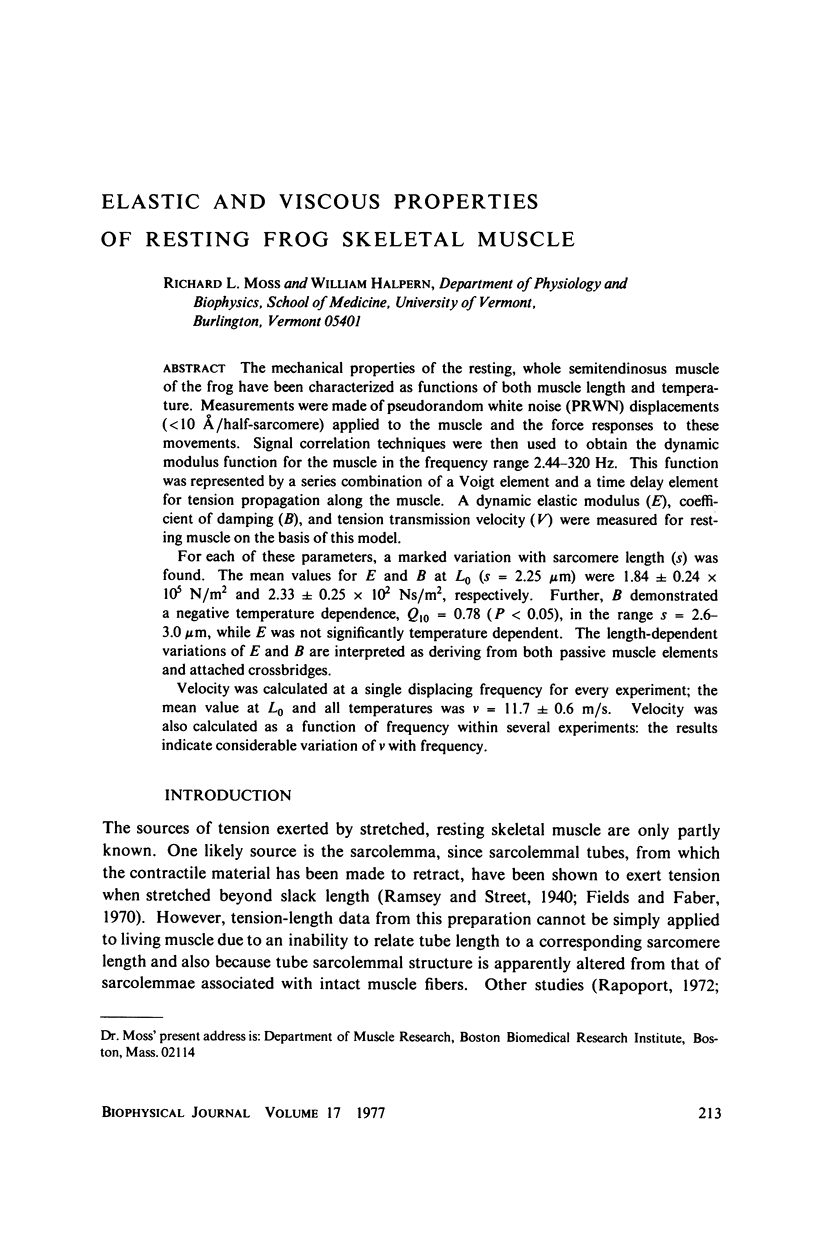

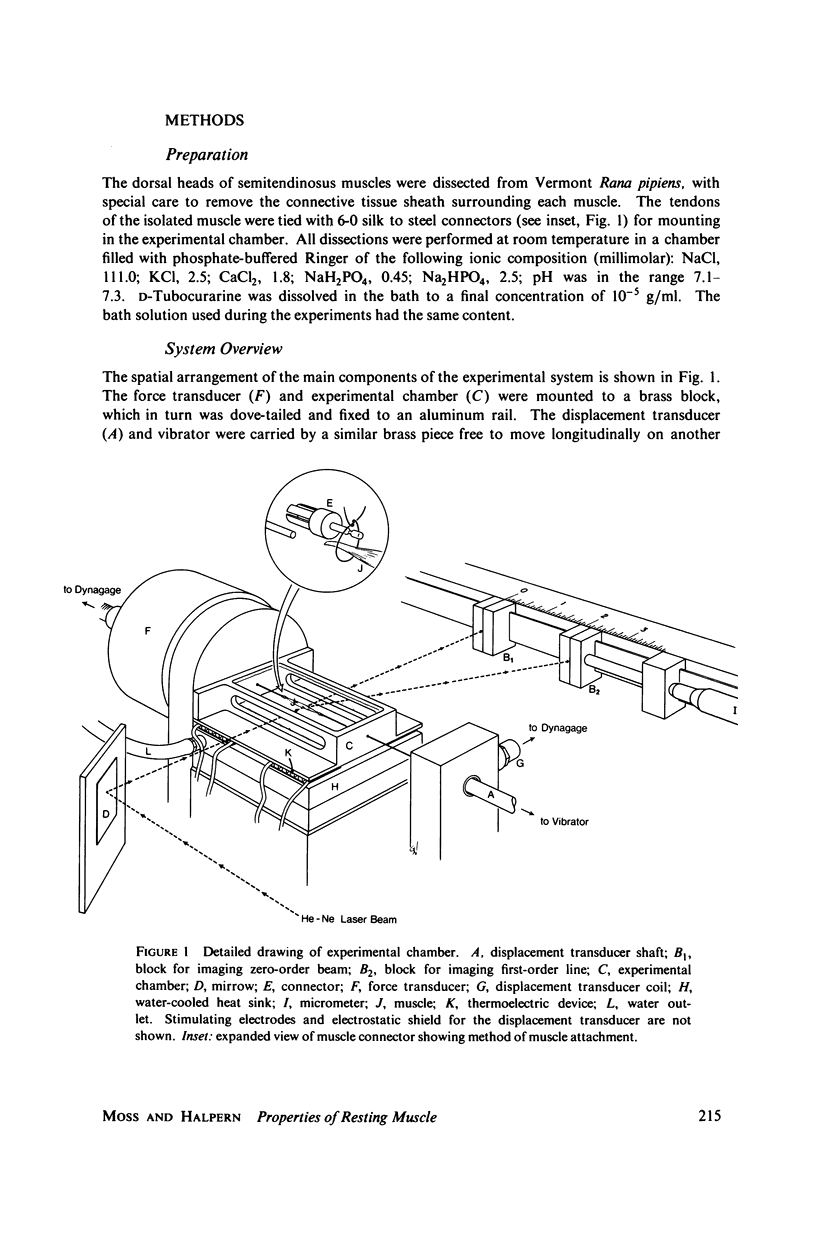
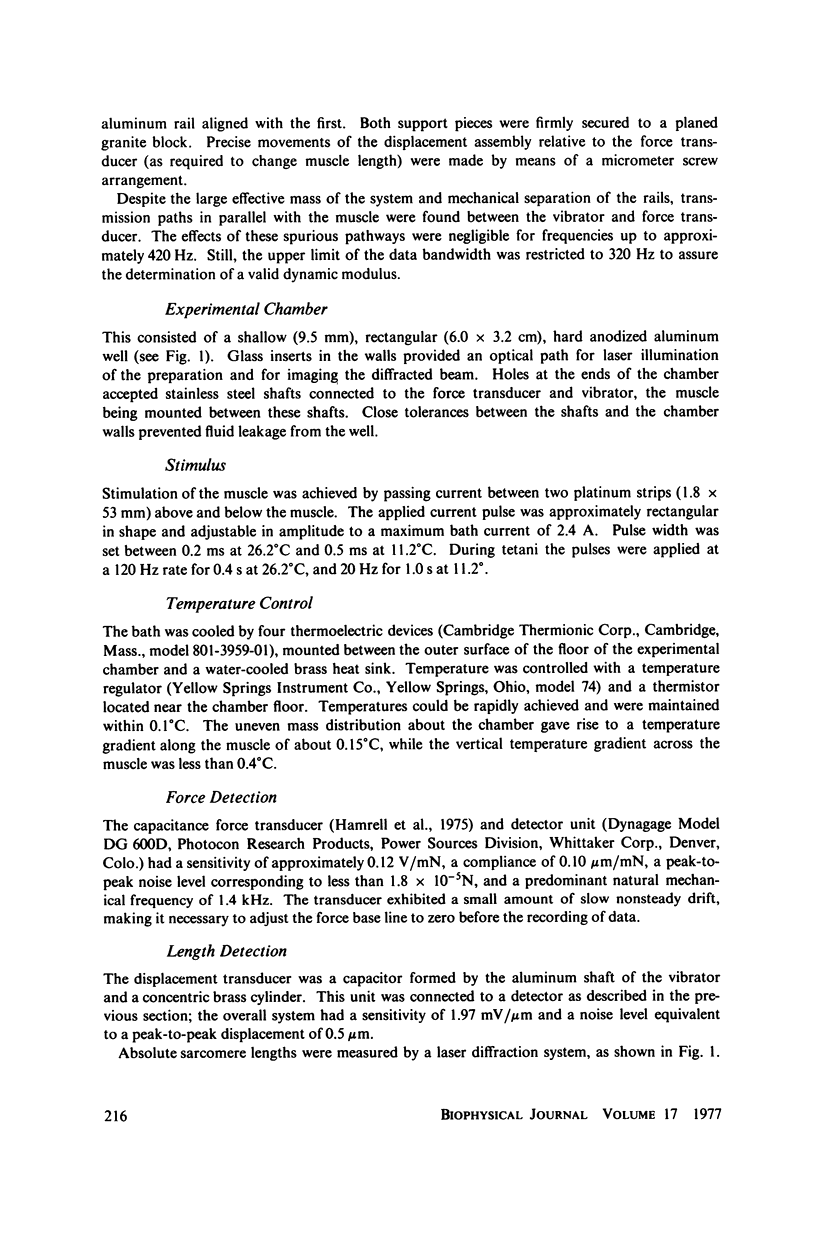
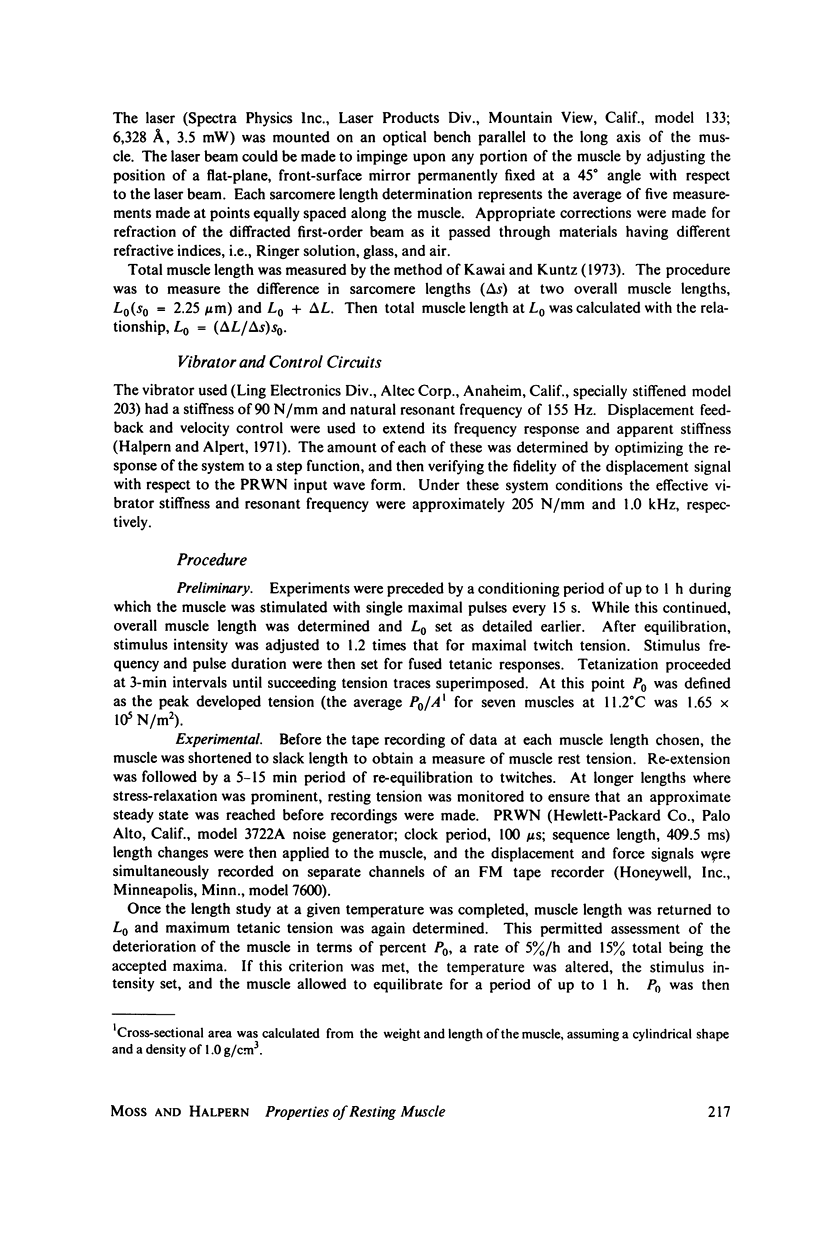
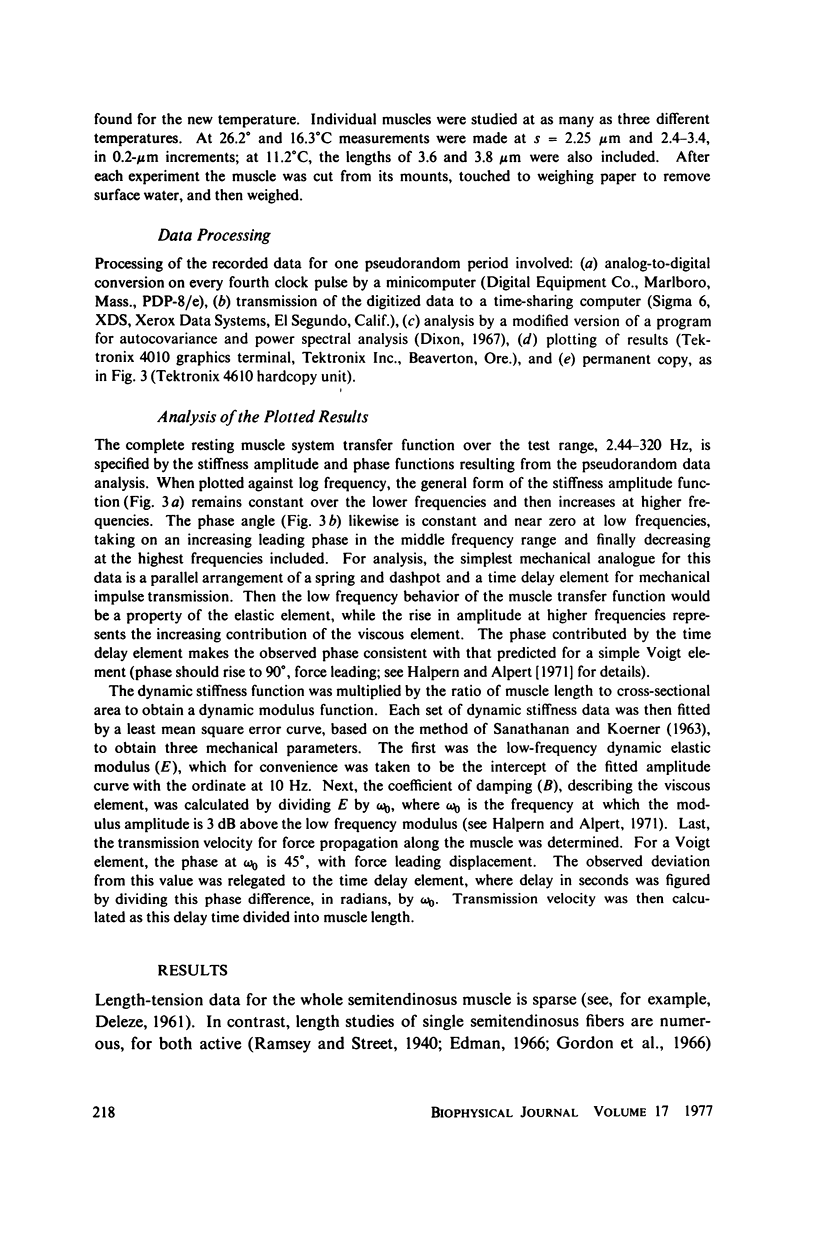
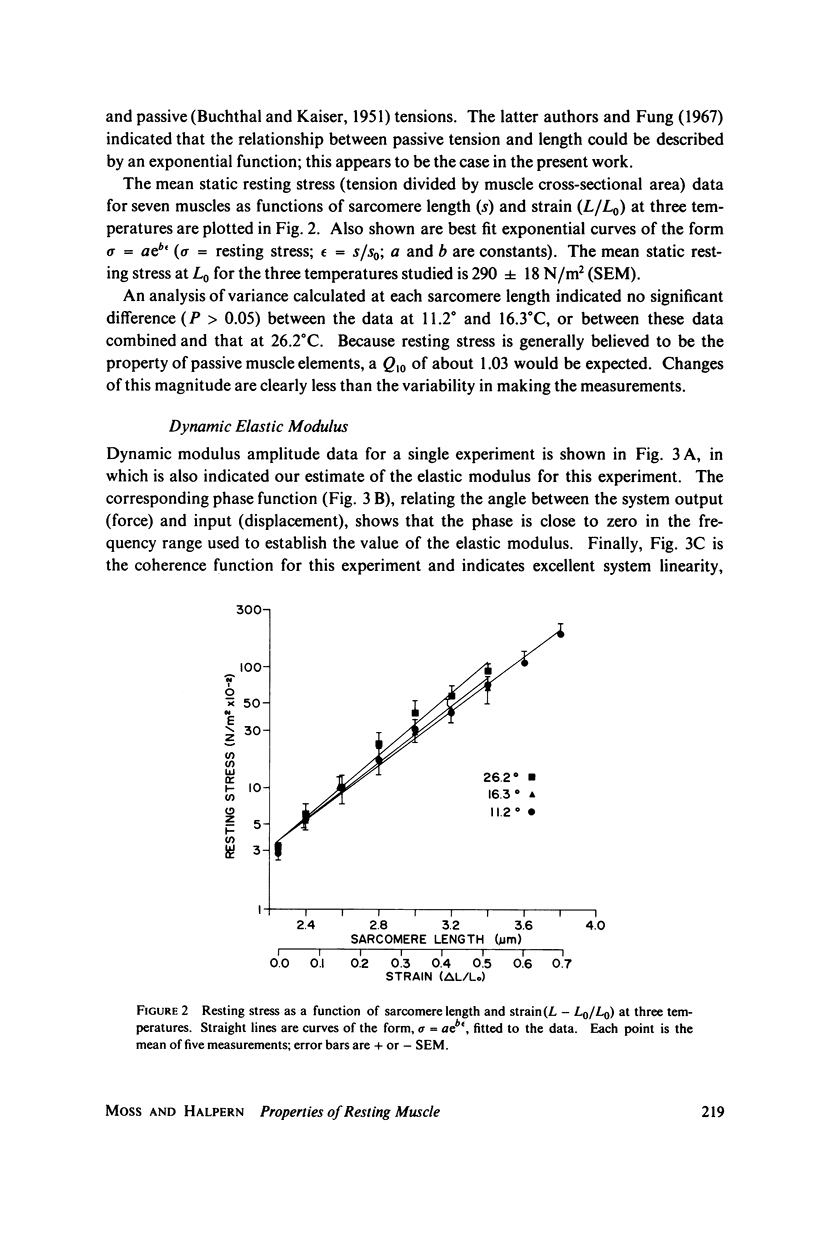

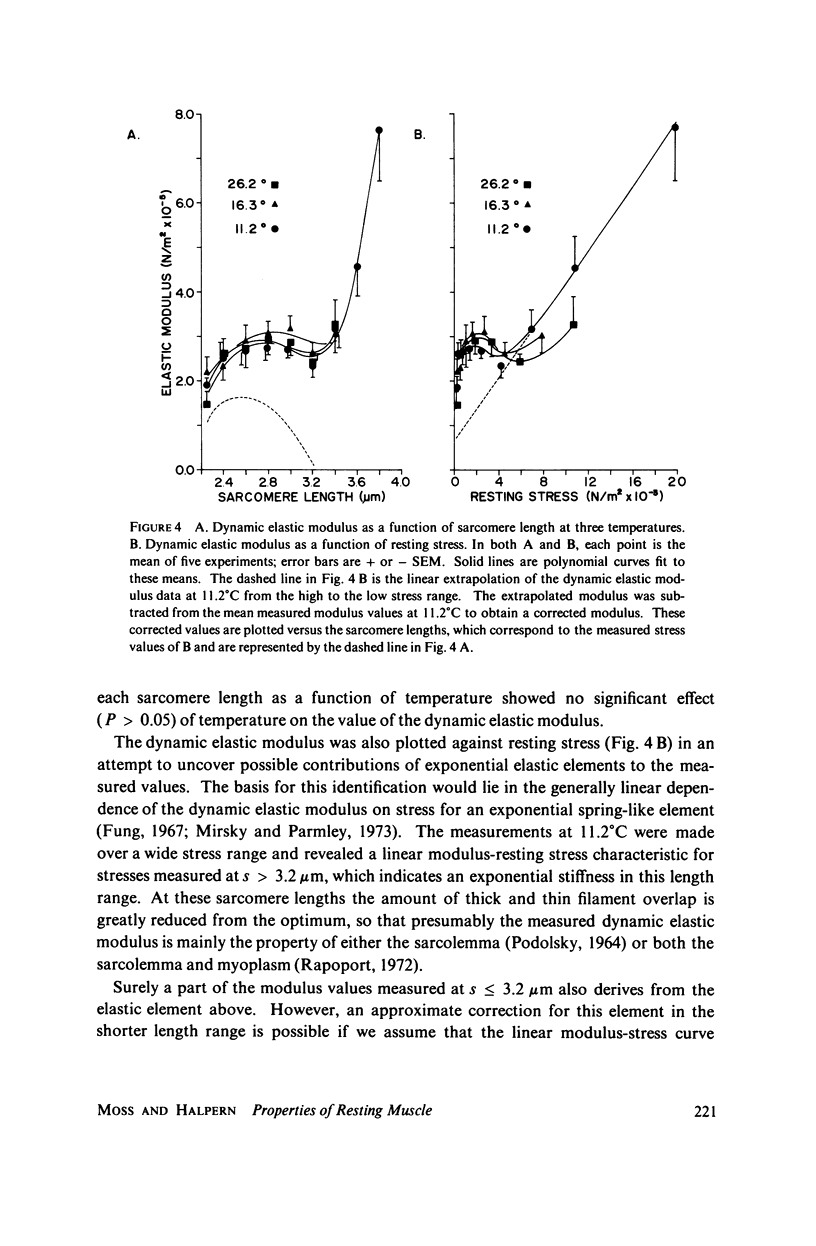
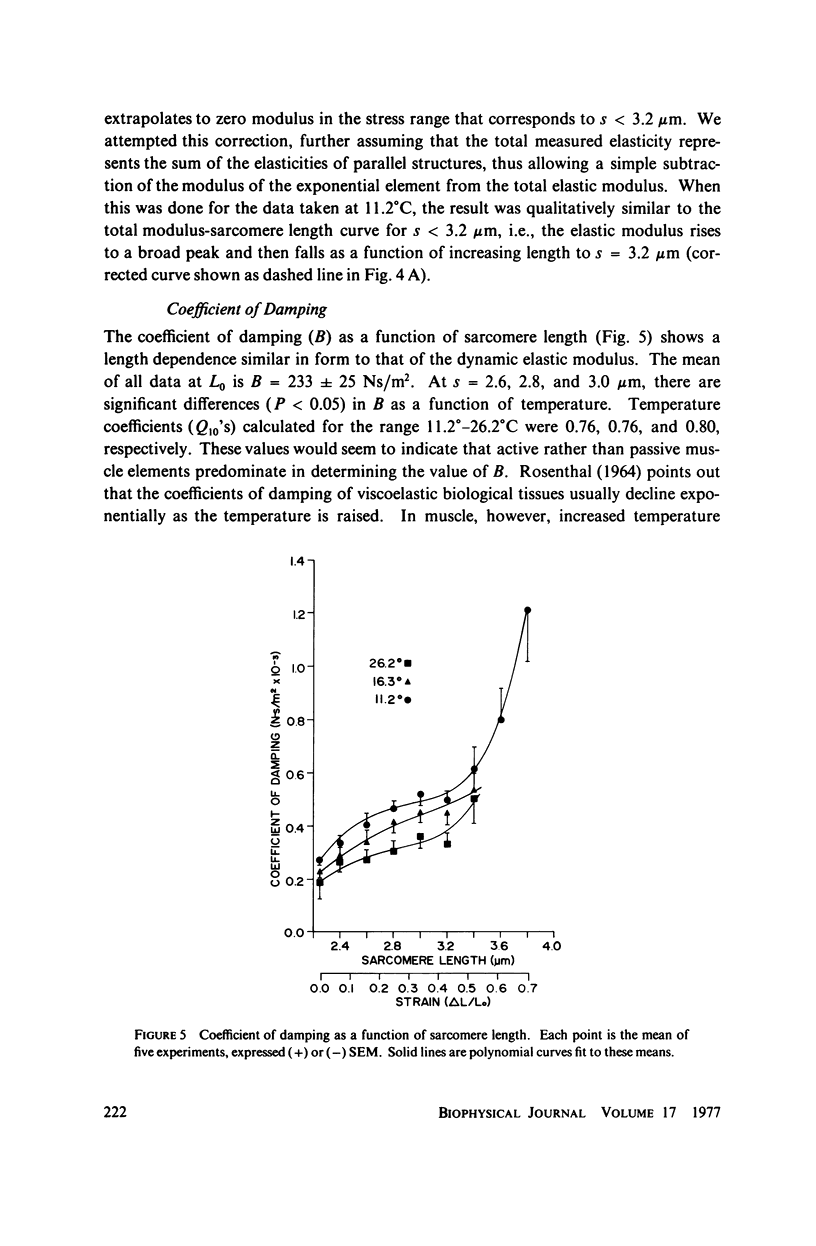
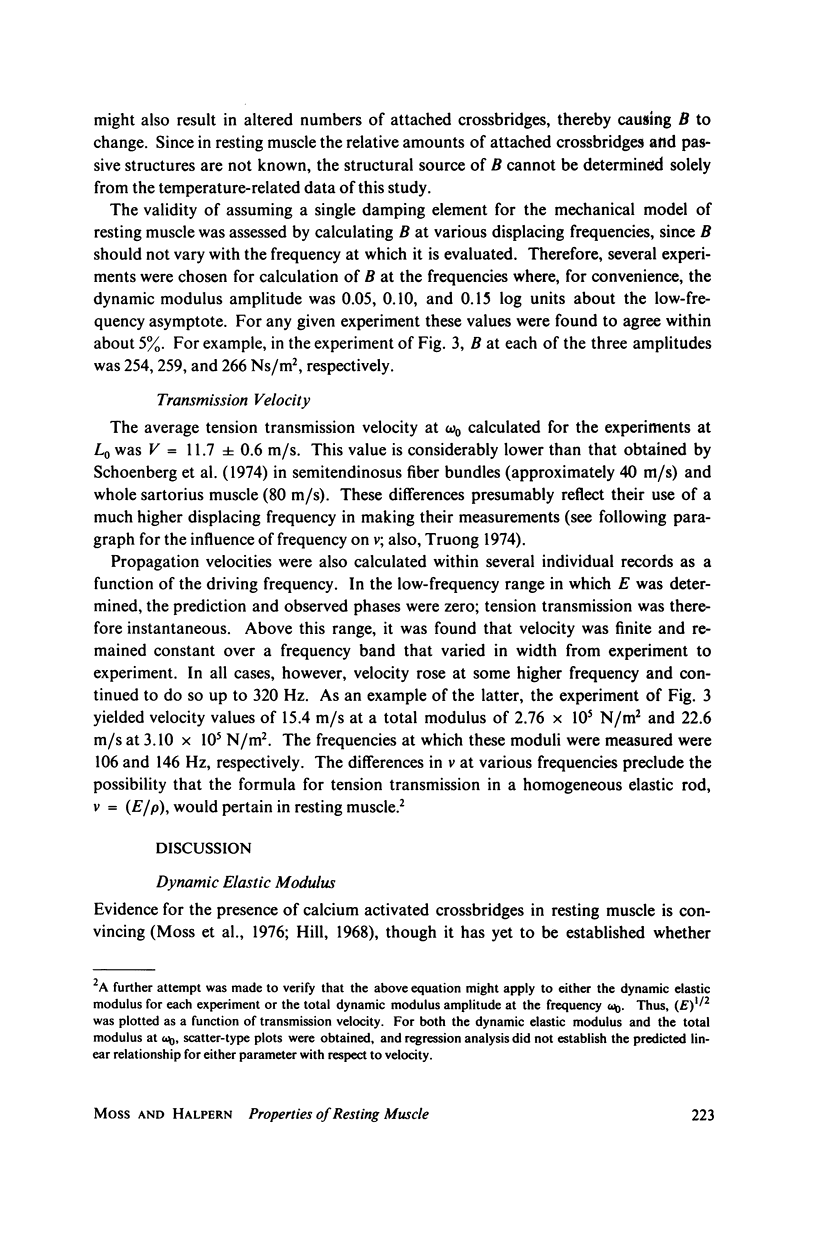
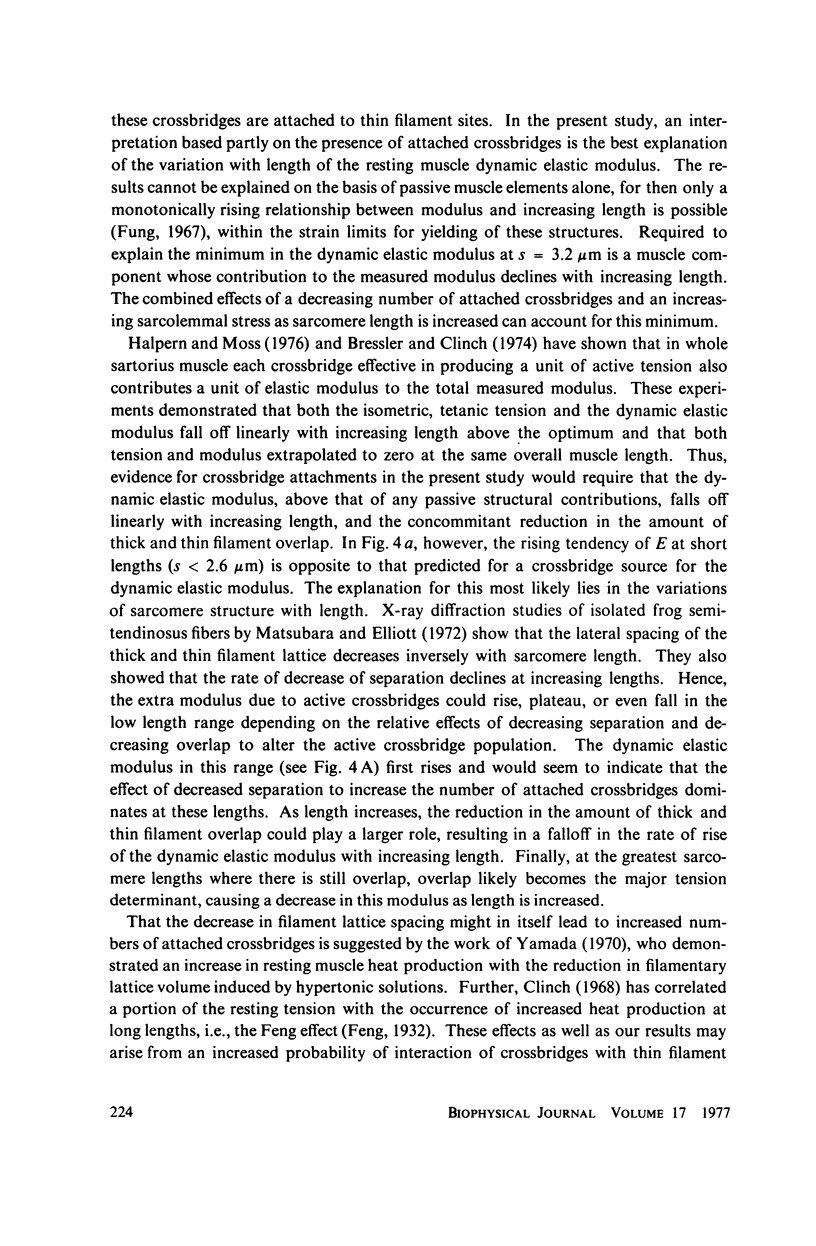
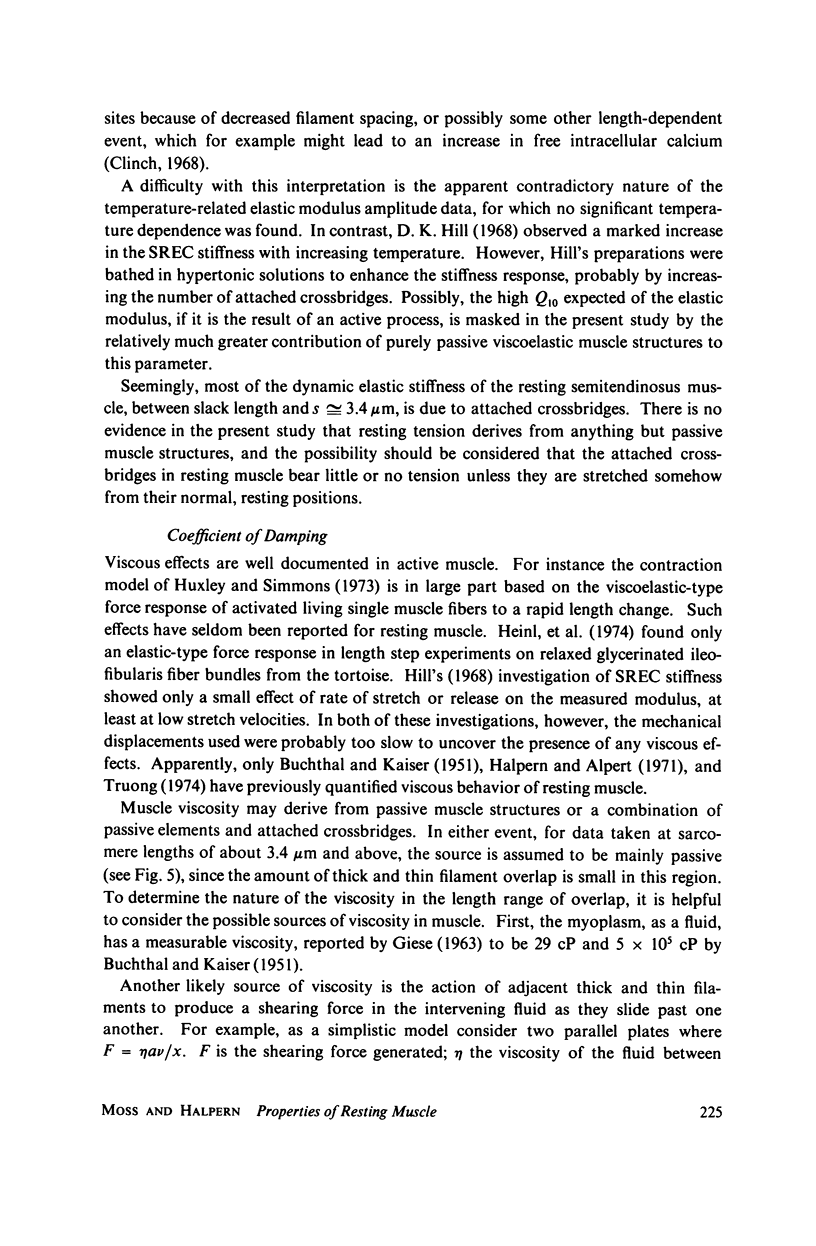
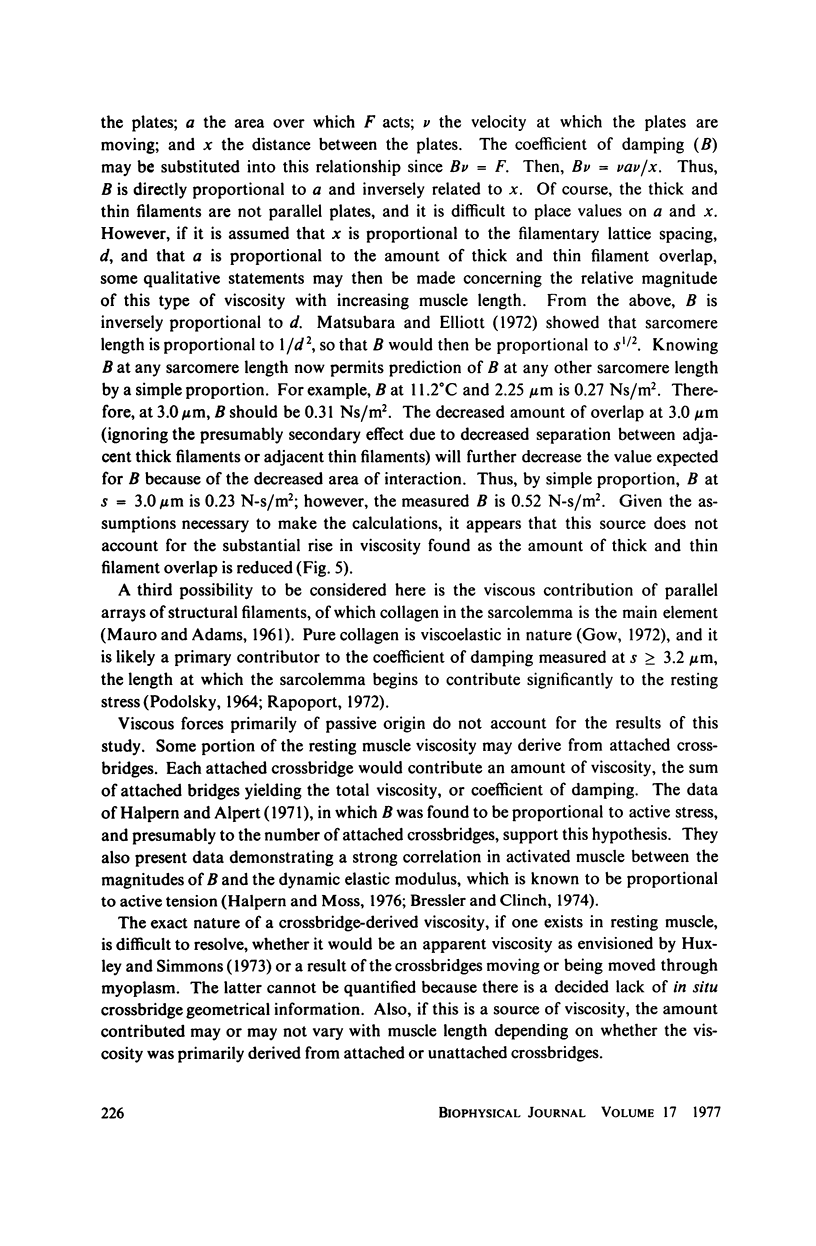
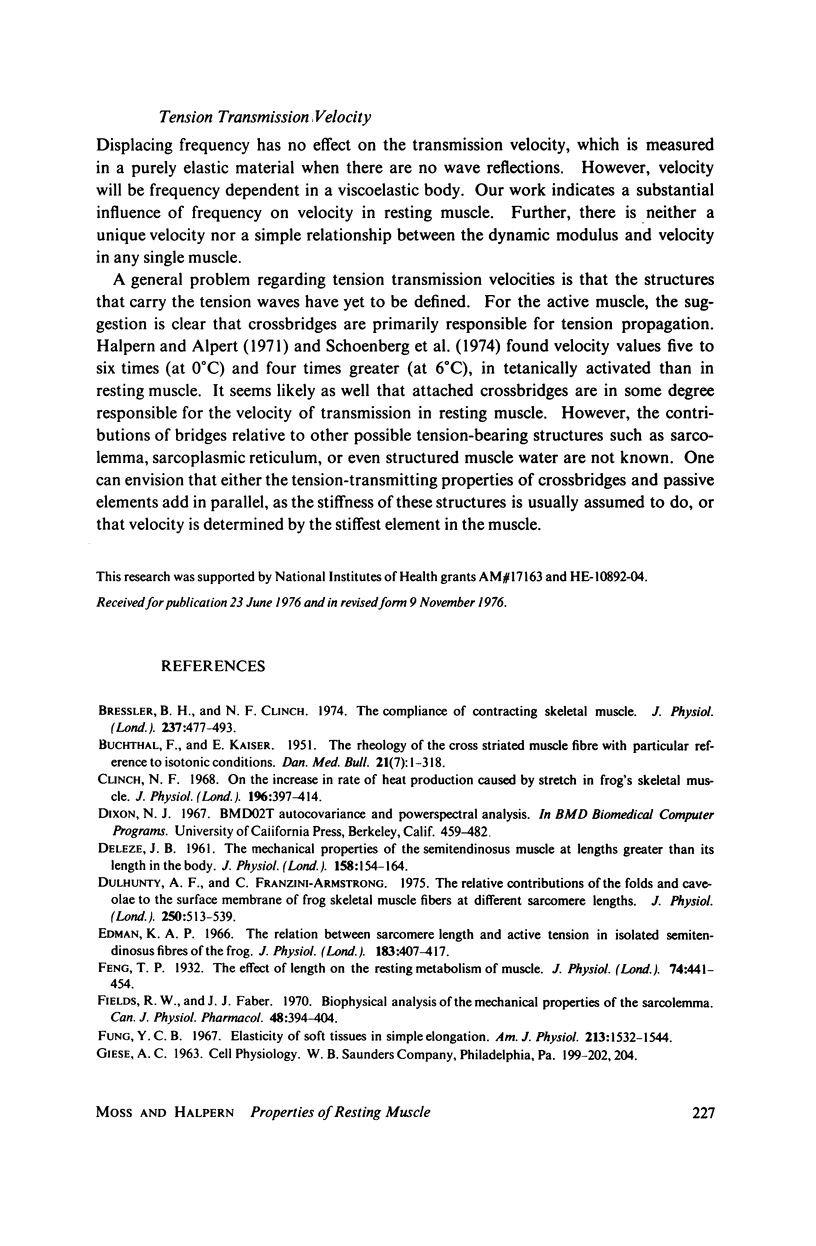
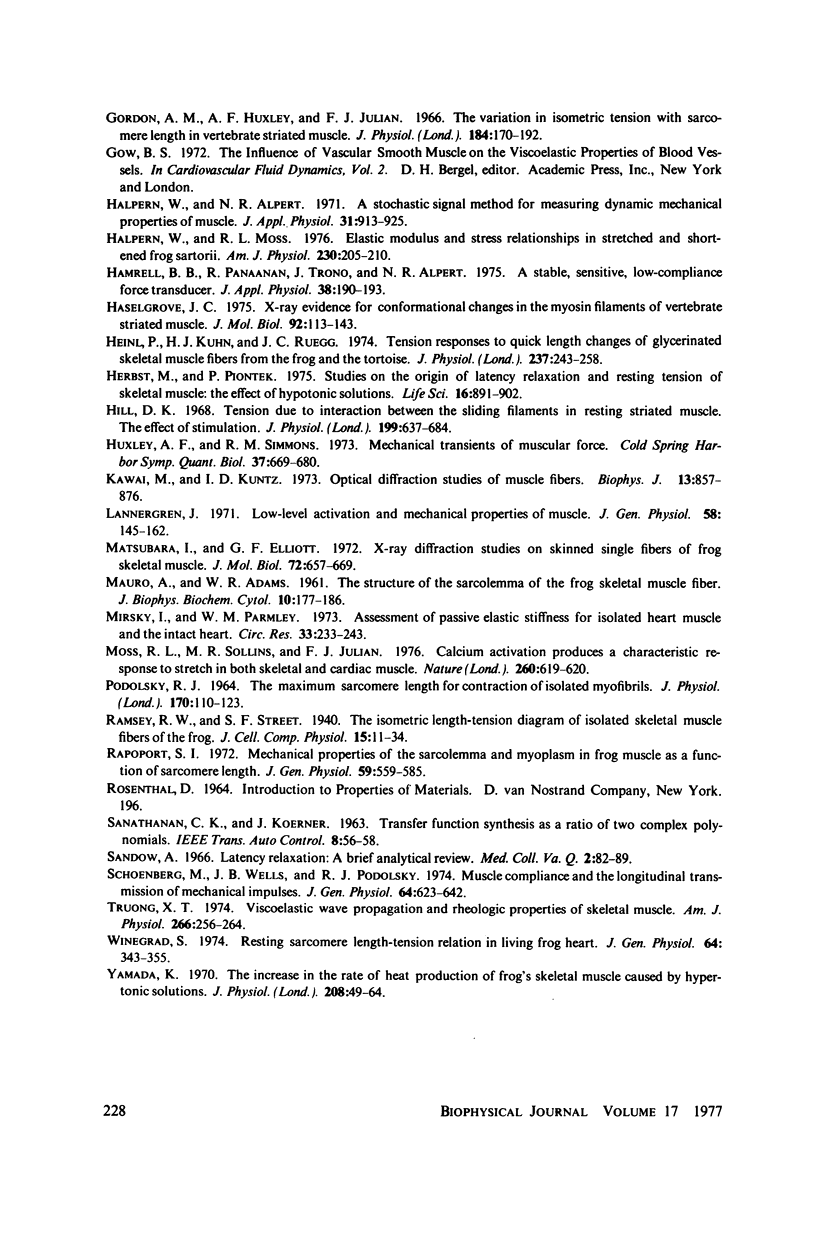
Selected References
These references are in PubMed. This may not be the complete list of references from this article.
- Bressler B. H., Clinch N. F. The compliance of contracting skeletal muscle. J Physiol. 1974 Mar;237(3):477–493. doi: 10.1113/jphysiol.1974.sp010493. [DOI] [PMC free article] [PubMed] [Google Scholar]
- Clinch N. F. On the increase in rate of heat production caused by stretch in frog's skeletal muscle. J Physiol. 1968 May;196(2):397–414. doi: 10.1113/jphysiol.1968.sp008514. [DOI] [PMC free article] [PubMed] [Google Scholar]
- DELEZE J. B. The mechanical properties of the semitendinosus muscle at lengths greater than its length in the body. J Physiol. 1961 Sep;158:154–164. [PMC free article] [PubMed] [Google Scholar]
- Dulhunty A. F., Franzini-Armstrong C. The relative contributions of the folds and caveolae to the surface membrane of frog skeletal muscle fibres at different sarcomere lengths. J Physiol. 1975 Sep;250(3):513–539. doi: 10.1113/jphysiol.1975.sp011068. [DOI] [PMC free article] [PubMed] [Google Scholar]
- Edman K. A. The relation between sarcomere length and active tension in isolated semitendinosus fibres of the frog. J Physiol. 1966 Mar;183(2):407–417. doi: 10.1113/jphysiol.1966.sp007873. [DOI] [PMC free article] [PubMed] [Google Scholar]
- Feng T. P. The effect of length on the resting metabolism of muscle. J Physiol. 1932 Apr 26;74(4):441–454. doi: 10.1113/jphysiol.1932.sp002860. [DOI] [PMC free article] [PubMed] [Google Scholar]
- Fields R. W., Faber J. J. Biophysical analysis of the mechanical properties of the sarcolemma. Can J Physiol Pharmacol. 1970 Jun;48(6):394–404. doi: 10.1139/y70-062. [DOI] [PubMed] [Google Scholar]
- Fung Y. C. Elasticity of soft tissues in simple elongation. Am J Physiol. 1967 Dec;213(6):1532–1544. doi: 10.1152/ajplegacy.1967.213.6.1532. [DOI] [PubMed] [Google Scholar]
- Gordon A. M., Huxley A. F., Julian F. J. The variation in isometric tension with sarcomere length in vertebrate muscle fibres. J Physiol. 1966 May;184(1):170–192. doi: 10.1113/jphysiol.1966.sp007909. [DOI] [PMC free article] [PubMed] [Google Scholar]
- Halpern W., Alpert N. R. A stochastic signal method for measuring dynamic mechanical properties of muscle. J Appl Physiol. 1971 Dec;31(6):913–925. doi: 10.1152/jappl.1971.31.6.913. [DOI] [PubMed] [Google Scholar]
- Halpern W., Moss R. L. Elastic modulus and stress relationships in stretched and shortened frog sartorii. Am J Physiol. 1976 Jan;230(1):205–210. doi: 10.1152/ajplegacy.1976.230.1.205. [DOI] [PubMed] [Google Scholar]
- Hamrell B. B., Panaanan R., Trono J., Alpert N. R. A stable, sensitive, low-compliance capacitance force transducer. J Appl Physiol. 1975 Jan;38(1):190–193. doi: 10.1152/jappl.1975.38.1.190. [DOI] [PubMed] [Google Scholar]
- Haselgrove J. C. X-ray evidence for conformational changes in the myosin filaments of vertebrate striated muscle. J Mol Biol. 1975 Feb 15;92(1):113–143. doi: 10.1016/0022-2836(75)90094-7. [DOI] [PubMed] [Google Scholar]
- Heinl P., Kuhn H. J., Rüegg J. C. Tension responses to quick length changes of glycerinated skeletal muscle fibres from the frog and tortoise. J Physiol. 1974 Mar;237(2):243–258. doi: 10.1113/jphysiol.1974.sp010480. [DOI] [PMC free article] [PubMed] [Google Scholar]
- Herbst M., Piontek P. Studies on the origin of latency relaxation and resting tension of skeletal muscle: the effect of hypotonic solutions. Life Sci. 1975 Mar 15;16(6):891–901. doi: 10.1016/0024-3205(75)90005-3. [DOI] [PubMed] [Google Scholar]
- Hill D. K. Tension due to interaction between the sliding filaments in resting striated muscle. The effect of stimulation. J Physiol. 1968 Dec;199(3):637–684. doi: 10.1113/jphysiol.1968.sp008672. [DOI] [PMC free article] [PubMed] [Google Scholar]
- Kawai M., Kuntz I. D. Optical diffraction studies of muscle fibers. Biophys J. 1973 Sep;13(9):857–876. doi: 10.1016/S0006-3495(73)86031-X. [DOI] [PMC free article] [PubMed] [Google Scholar]
- Lännergren J. The effect of low-level activation on the mechanical properties of isolated frog muscle fibers. J Gen Physiol. 1971 Aug;58(2):145–162. doi: 10.1085/jgp.58.2.145. [DOI] [PMC free article] [PubMed] [Google Scholar]
- MAURO A., ADAMS W. R. The structure of the sarcolemma of the frog skeletal muscle fiber. J Biophys Biochem Cytol. 1961 Aug;10(4):177–185. doi: 10.1083/jcb.10.4.177. [DOI] [PMC free article] [PubMed] [Google Scholar]
- Matsubara I., Elliott G. F. X-ray diffraction studies on skinned single fibres of frog skeletal muscle. J Mol Biol. 1972 Dec 30;72(3):657–669. doi: 10.1016/0022-2836(72)90183-0. [DOI] [PubMed] [Google Scholar]
- Mirsky I., Parmley W. W. Assessment of passive elastic stiffness for isolated heart muscle and the intact heart. Circ Res. 1973 Aug;33(2):233–243. doi: 10.1161/01.res.33.2.233. [DOI] [PubMed] [Google Scholar]
- Moss R. L., Sollins M. R., Julian F. J. Calcium activation produces a characteristic response to stretch in both skeletal and cardiac muscle. Nature. 1976 Apr 15;260(5552):619–621. doi: 10.1038/260619a0. [DOI] [PubMed] [Google Scholar]
- PODOLSKY R. J. THE MAXIMUM SARCOMERE LENGTH FOR CONTRACTION OF ISOLATED MYOFIBRILS. J Physiol. 1964 Jan;170:110–123. doi: 10.1113/jphysiol.1964.sp007317. [DOI] [PMC free article] [PubMed] [Google Scholar]
- Rapoport S. I. Mechanical properties of the sarcolemma and myoplasm in frog muscle as a function of sarcomere length. J Gen Physiol. 1972 May;59(5):559–585. doi: 10.1085/jgp.59.5.559. [DOI] [PMC free article] [PubMed] [Google Scholar]
- Schoenberg M., Wells J. B., Podolsky R. J. Muscle compliance and the longitudinal transmission of mechanical impulses. J Gen Physiol. 1974 Dec;64(6):623–642. doi: 10.1085/jgp.64.6.623. [DOI] [PMC free article] [PubMed] [Google Scholar]
- Truong X. T. Viscoelastic wave propagation and rheologic properties of skeletal muscle. Am J Physiol. 1974 Feb;226(2):256–264. doi: 10.1152/ajplegacy.1974.226.2.256. [DOI] [PubMed] [Google Scholar]
- Winegrad S. Resting sarcomere length-tension relation in living frog heart. J Gen Physiol. 1974 Sep;64(3):343–355. doi: 10.1085/jgp.64.3.343. [DOI] [PMC free article] [PubMed] [Google Scholar]
- Yamada K. The increase in the rate of heat production of frog's skeletal muscle caused by hypertonic solutions. J Physiol. 1970 May;208(1):49–64. doi: 10.1113/jphysiol.1970.sp009105. [DOI] [PMC free article] [PubMed] [Google Scholar]


